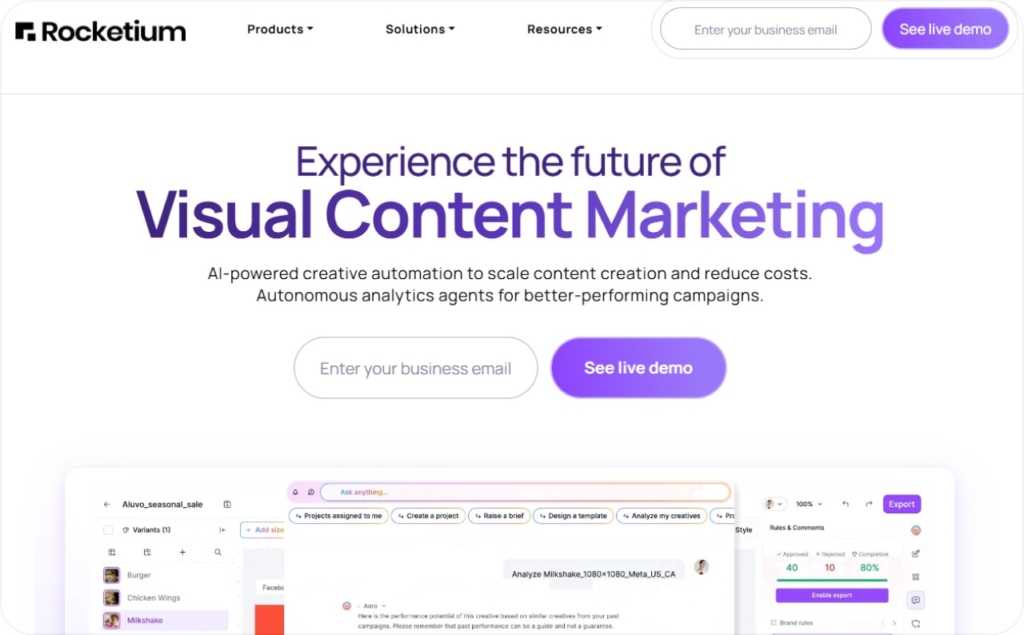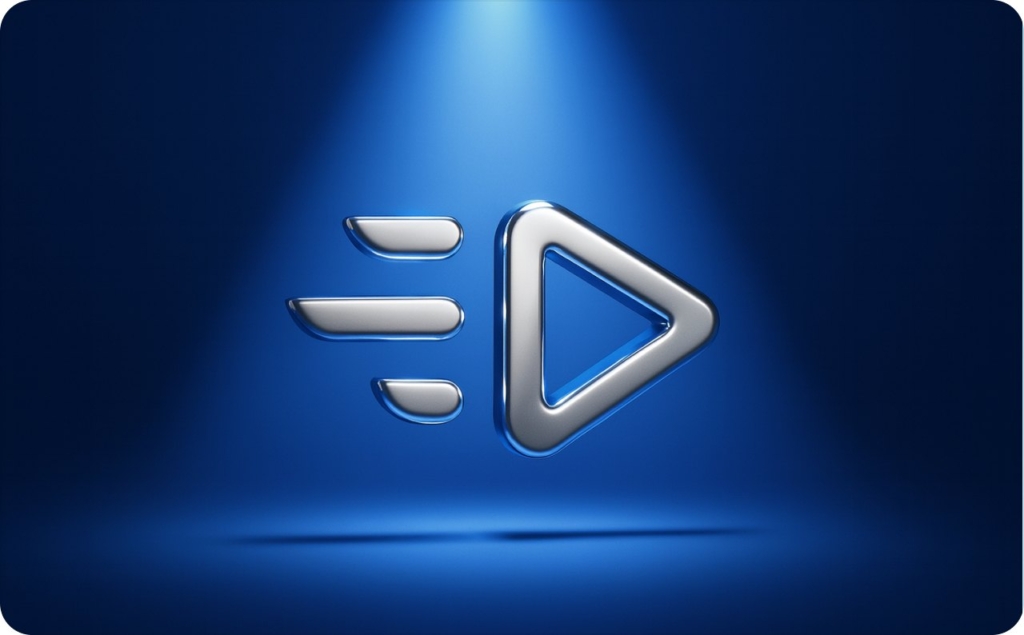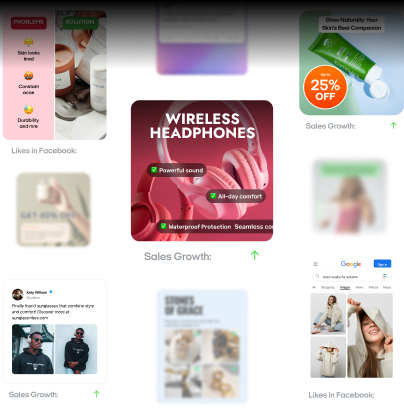Creative management platform: Benefits & 7 best practices to save time
Tired of juggling endless ad creatives? Zeely AI shares key benefits and seven expert practices for using creative management platforms to streamline work and save valuable time.
Still resizing the same banner in five different formats? That’s the old way. Today, savvy marketers and creative directors rely on a Creative Management Platforms to automate tedious tasks, unify workflows, and keep brand messaging consistent.
For small businesses, where every minute and marketing dollar matters, a CMP isn’t just helpful, it gives lean teams the power to create high-performing, on-brand ads quickly, without relying on expensive agencies or clunky design back-and-forth.
In this guide, you’ll learn exactly what a CMP does, how it solves your everyday creative challenges, and how to implement one to grow smarter, not harder.

What is a CMP?
A CMP is a cloud-based creative operations platform that merges ad design, digital asset management, and campaign management in one hub. According to Fortune business insights, brands that use CMPs see 90% faster campaign launches and higher creative output. In other words, they use CMPs to save time and money while keeping their look fresh.
Before CMPs, teams often juggled multiple file formats and manual processes. Imagine you run marketing for a sneaker brand and need dozens of banner variations for social platforms. Without a CMP, you’d spend hours resizing and re-checking brand guidelines for each version. With a CMP, you tap into drag-and-drop editors, template libraries, and batch processing that handle those repetitive tasks in minutes.
Ready to see how a CMP can streamline your entire ad process? Next, let’s break down the key features that make this platform a game-changer.
Key features of a CMP and benefits you can get from it
A CMP isn’t just another tool on your shelf. Gartner defines it as the engine that streamlines every stage of ad creation, from brainstorming your design concepts to analyzing conversions. When used wisely, a CMP can slash production times, boost personalization, and unify your team’s efforts.
Creative automation and scalable production
Manual resizing eats time and resources. With creative automation in a CMP, you can produce multiple ad versions in hours, not days. Imagine you’re marketing premium coffee makers. You test two headlines — “Brew the perfect cup” and “Enjoy a fresh pour now.” After one week, the “Fresh pour” ad delivers 18% more sign-ups. That mini-test shows how automation makes tweaking variations quick and profitable.
You’ll also find drag-and-drop editors and templates that cut design work in half. By swapping images or tweaking text inside a centralized platform, your team can roll out dozens of ads for different channels. This flexibility scales when you’re handling big campaigns, like a global product launch or seasonal event, because you’re not caught in endless email threads and revision cycles.
Dynamic Creative Optimization and personalization
Static ads can miss the mark. Dynamic creative optimization, or DCO, changes that by combining user data with real-time design decisions. According to a Deloitte survey, high-growth companies are more likely to use dynamic creative optimization and programmatic media for personalized ads, while negative-growth brands rely more on traditional uses of first-party data like optimized email and predictive marketing.
If your coffee maker brand tracks browsing habits, you can show specialty blends to coffee aficionados and highlight quick-brew features to on-the-go professionals. You can discover a jump in sales after tailoring your ads based on viewing times and personal taste data.
Thanks to A/B testing and continuous iteration, DCO adapts content on the fly. If your “Fresh pour” headline is winning on morning campaigns, the CMP serves it more often. Should conversions drop, the platform flags it, so you can update visuals or swap out a call to action. This fluid approach ensures every ad feels relevant and timely, which can make a big difference in crowded markets.
Centralized storage and collaborative tools
Brand integrity depends on having the right assets at your fingertips. That’s why CMPs feature centralized storage where you’ll keep logos, product images, and design files in one secure library. Gone are the days of digging through old email attachments or cloud folders labeled “Final_4.” Everyone pulls the correct file every time.
Equally important, in-platform collaboration keeps feedback organized. Designers, copywriters, and project leads can annotate ads without messy email threads. This setup shrinks review cycles and reduces confusion over which version is correct. If your creative director in London updates a logo color, your team in New York sees it instantly and no extra steps required.
Integrated analytics and real-time performance tracking
Data shapes smart decisions, so the best CMPs include real-time analytics. When you launch an ad, you’ll see immediate stats on impressions, clicks, and conversions. If your “Brew the perfect cup” headline suddenly lags in the afternoon, the platform alerts you to swap it for the “Fresh pour” variant. That means you can optimize mid-campaign, not after the fact.
Some CMPs even use predictive analytics to spot patterns before they become problems. If you see engagement dropping on a specific format or audience, you can pivot fast by revising your copy or refreshing your design. By using these insights to guide your next steps, you’ll tighten your ROI and keep your creative content relevant in a changing market.
Now that you know how a CMP tackles everything from rapid ad production to in-depth analytics, it’s time to see how these features solve everyday issues like cutting launch delays and safeguarding brand standards. Let’s dive into the pain points and discover exactly how a CMP addresses them in real, measurable ways.
How CMPs overcome key marketing pain points
If you’ve ever scrambled to finalize ads just before a big product launch, you know how time-consuming the creative process can be. A CMP shortens that cycle. It cuts production times through workflow automation and rapid creative iteration, so you’re not scrambling at the last minute. Instead of emailing design files back and forth, teams work in one collaborative environment.
Imagine you run marketing for a fitness apparel brand. You need 20 ad variations in five days: spanning social media, email headers, and display banners. With a CMP, you pull from pre-approved templates and automate routine tasks like image resizing. You can see a faster turnaround simply by letting a CMP auto-adjust banners for different channels. This is true campaign acceleration — if a rival releases a new product, you can launch a counter-offer and stay ahead.
In particular, Rocketium’s workflow automation enabled a major brand to produce up to 100,000 content pieces per month during peak sale periods, illustrating how CMPs can scale creative output under high-pressure timelines — a reality for any brand navigating seasonal spikes or competitive launches.
By centralizing tasks, the CMP also avoids version chaos. If both a marketing lead and a designer update the same asset, the platform flags conflicts and merges revisions. That streamlined production flow saves you from missed deadlines and ensures your messaging stays consistent.

They ensure brand consistency across channels
Having different-looking ads on Facebook, Instagram, and your website can confuse potential customers. A CMP simplifies brand control by storing standardized templates, logos, and color palettes in a centralized repository. Each creative update pulls from these approved assets, guaranteeing a unified brand identity everywhere your ads appear.
Picture a restaurant chain introducing a new summer menu. Local teams want region-specific photos, yet they must keep the same tagline and color scheme. With a CMP, they only swap images or text, leaving locked design elements intact. This integrated asset management not only enforces brand guidelines but also prevents accidental mismatches.
If you decide to tweak your brand logo or refine your tone of voice, the CMP distributes these updates to every template. This centralized control means you won’t waste time chasing down old files or second-guessing each design.
They eliminate repetitive manual tasks
Repetitive tasks like resizing ads or renaming files can eat up valuable hours. A CMP transforms those duties with creative task automation, so your team can focus on what really matters — testing fresh concepts and polishing copy.
For instance, a fashion e-commerce brand needed to produce 50 unique banners weekly for social ads, emails, and mobile app placements. By deploying batch processing within a CMP, they cut 16 hours of design work per week.
This automated resizing also reduces errors. If two people try to edit the same banner, version management tools detect conflicts before final approval. That kind of workflow efficiency lets you roll out new promos in minutes instead of days. Need to adjust your holiday theme? Drag your updated images into drag-and-drop editors and let the CMP do the rest.
By removing these manual chores, a CMP frees your creative team to experiment with new styles or test different offers without being bogged down by grunt work. You’ll see faster campaign improvements, fewer mistakes, and a regular stream of fresh ads.
Now that you understand how CMPs tackle speed, branding, and time-consuming tasks, let’s compare them to Digital Asset Management systems to see which solution best suits your needs.
Let’s compare CMP vs. DAM as creative and asset management platforms
No wonder you’re probably weighing a creative management platform against a Digital Asset Management system. The terms are often used interchangeably, but they serve distinct roles in the marketing tech stack.
A CMP is designed for creative production workflows, for things like building, testing, and launching ad variations. A DAM, in contrast, focuses on centralized asset storage, giving teams a secure, searchable place to store and distribute finalized brand materials.
The core difference lies in function. CMPs support real-time creative iteration with features like drag-and-drop editing, automated resizing, and template-based versioning. They’re built for marketers who need speed, personalization, and campaign-level flexibility.
DAMs, on the other hand, manage asset libraries with structured metadata, version histories, and usage rights control. They help brands maintain compliance and consistency by archiving final assets for future use.
To understand the difference between the two, just check the table bellow:
| Feature / function | Creative management platform | Digital asset management |
| Primary purpose | Ad creation, testing, campaign automation | Asset storage, retrieval, governance |
| Core entities | Templates, ad variations, creative workflows | Images, videos, logos, final creative assets |
| Key capabilities | Real-time editing, drag-and-drop design, batch processing | Metadata tagging, version control, rights management |
| Best for | Dynamic ad production, multichannel creative execution | Brand asset storage, multi-departmental asset access |
| Speed vs structure | Optimized for agility and speed | Optimized for compliance and organization |
| Integration opportunities | CRM, ad tech, social ad platforms | CMS, brand portals, internal content libraries |
| Example tools | Zeely AI, Celtra, Bannerflow | Bynder, Brandfolder, Adobe Experience Manager, Widen |
| Combined use case | Design, test, and deploy ads in CMP; archive final creatives in DAM | Pull final brand assets from DAM to ensure consistency in CMP ad variants |
So, CMP vs DAM isn’t always an either-or decision. Many modern teams integrate both: CMPs for content creation and testing, DAMs for post-production asset management. When used together, they unlock the distinct advantages of each — fast campaign execution, structured asset governance, and long-term ad asset reuse.
Still unsure which solution fits best? Start by mapping your creative lifecycle from ideation to distribution, and align tools based on where speed or structure matters most. Now that you’ve clarified the differences, let’s explore how to implement a CMP effectively across your creative team.
7 best practices and implementation strategies for CMPs
Adopting a Creative Management Platform can transform your marketing, but a haphazard rollout may lead to confusion and bottlenecks. Follow this step-by-step guide to ensure a smooth implementation.
1. Define user roles and configure creative workflows
Start by assigning clear user permissions: designers, reviewers, campaign managers. All within your CMP interface. Most platforms include workflow configuration templates and role-based access control to support collaborative environments. Establishing these parameters early ensures smoother creative versioning, reduces feedback loops, and improves overall workflow governance.
2. Launch with a pilot campaign
Before a full rollout, test the platform using a contained creative use case, such as a localized paid social campaign or product launch. This allows your team to validate core functions like batch creative generation, template customization, and asset approval routing. Use Zeely AI’s static ad generator or AI video maker to rapidly prototype high-performing ad variants during this phase.
3. Integrate with CRM and ad tech stack
A modern CMP should sync with your CRM platform, DAM system, and advertising channels. This cross-system integration enables real-time data enrichment for personalized ad delivery, supports dynamic content population, and ensures cohesive campaign orchestration.
4. Automate creative collaboration and feedback
Enable in-platform creative collaboration tools to consolidate reviews, approvals, and asset comments. Replace fragmented communication with centralized, timestamped input on each creative asset. Use CMP features like version locking, comment threading, and real-time previewing to streamline internal feedback processes.
5. Build regulatory compliance into the workflow
To stay aligned with GDPR, CCPA, and emerging data protection laws, create compliance workflows that include legal checkpoints. Configure your CMP to flag creatives using personal data and require approval before distribution. Use data governance tags and auditable review trails to meet compliance standards while maintaining creative agility.
6. Leverage AI-powered creative automation
Advanced CMPs, such as Zeely AI, offer automated ad production, AI-generated hooks, and audience-specific messaging. These tools reduce manual effort while enabling real-time ad optimization. Zeely AI has a Batch Mode that allows creating multiple ads at a time, which helps to test and scale top-performing creatives, improving ROAS, CTR, and conversion rates through algorithmic decision-making.
7. Monitor performance and iterate with data
Post-launch, use your CMP’s analytics dashboard to track performance across channels. Identify weak points using campaign-level KPIs, then deploy multivariate testing or rotate fresh assets to maintain engagement. Continuous creative iteration backed by performance insights helps you maximize ad spend efficiency and achieve measurable growth.
By applying these CMP implementation strategies, you’ll create a scalable system for creative asset production, reduce time-to-launch, and future-proof your marketing operations with built-in compliance and optimization frameworks.
Key takeaways
- 1
Pilot first, scale fast
Test your CMP on one small campaign to iron out workflows before a company-wide rollout
- 2
Bake in roles & compliance
Set clear permissions and automated legal checkpoints to streamline collaboration and stay audit-ready
- 3
Connect data + AI
Sync CRM/ad channels and use AI-driven testing to keep swapping in top-performing creatives for higher ROAS
Emerging trends and future disruptions in CMP technology
AI integration and machine learning are redefining the future of CMPs, allowing marketers to predict audience behavior and optimize creatives in real time. For instance, next-generation CMPs can automatically select color schemes or headlines that resonate with specific demographics.
This forward-thinking technology reduces guesswork and boosts ad performance. As data regulations shift, platforms will likely include stronger compliance tools, so you can gather insights without risking privacy violations.
Another emerging trend is the push toward multichannel creative automation. With consumers moving across social, mobile, and connected TV platforms, CMPs that handle advanced format variations will have a distinct advantage.
We’re also seeing market disruptions from smaller SaaS providers offering specialized features, like localized ad translation or immersive 3D asset creation. While these newcomers aren’t always full-service, they spur innovation for established CMPs.
In the coming years, expect a broader emphasis on regulatory impact and data privacy, with CMPs integrating built-in compliance checks. Experts predict that “smart workflow orchestration” will link real-time analytics to automated creative changes, letting you adapt ads as soon as consumer behavior shifts. Brands that adopt these creative innovations early will have a head start in audience engagement and overall campaign success.
Final words
A Creative Management Platform isn’t just a solution, it’s a strategic foundation for small businesses looking to scale without extra headcount, reduce creative chaos, and build stronger, faster-performing campaigns. Throughout this guide, you’ve seen how a CMP unifies creative production, streamlines workflows, maintains brand consistency, and brings data-driven insights into everyday marketing.
From eliminating repetitive manual work to enabling real-time personalization and multichannel automation, CMPs help small teams deliver like big ones. Whether you’re managing five ad variants or fifty, the right platform puts you in control of quality, speed, and results.
By applying the best practices outlined here — from integration and compliance setup to collaboration and continuous optimization, you’re not just adopting a new tool. You’re creating a more agile, more intelligent creative engine for your business.
Now that you understand what a CMP can do, it’s time to start mapping it to your workflow. With the right strategy, even the leanest team can build a marketing operation that’s fast, flexible, and built to grow.
Also recommended



